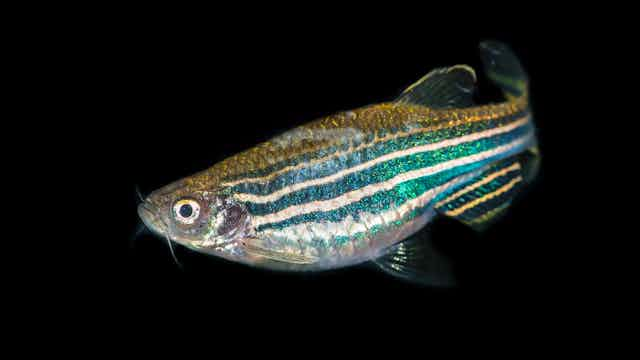The natural world presents a palette of beautiful complexity. From the peacock tail and the eyespots of a butterfly, to the evolving camouflage of the chameleon, nature loves patterns.
Biologists may be able to tell you why an animal has a certain pattern. For example, it may have evolved its skin pattern for mating purposes, as a warning sign, or for defence purposes. However, we are still in the dark when it comes to how the patterns are produced.
Although we currently lack the experimental insight, mathematicians have been playing around with pattern formation equations since 1952, when the great Alan Turing published the seminal paper, The Chemical Basis of Morphogenesis. In this paper, he presented a theory that said patterns could spontaneously appear using nothing more than a protein’s natural tendency to move randomly through tissue and interact with other cells and proteins.
The theory is incredibly counter-intuitive, and we can only wonder how Turing discovered it. Patterns, as Turing saw them, depend on two components: interacting agents and agent diffusion. Each component on its own does not create a pattern. In fact, diffusion is a well-known pattern destroyer: if you put milk in water (and don’t stir), the milk will diffuse – or spread – out across the cup. You don’t end up with spots, or stripes of milk. You just have a cup of uniform milky water.
Turing’s genius saw through this and he demonstrated that if you combine these two components in just the right way, diffusion could actually drive the system to form spots and stripes. This idea was so far ahead of its time that we are still working on unravelling its complexity 65 years later.
Light and dark
Unfortunately, biology refuses to be so simple. Diffusion assumes that the agents which create a pattern – for example, chemicals, proteins or cells – are dumb, in that they move around space randomly. However, in 2014, the experimental lab of Shigeru Kondo demonstrated that cells in particular are more cunning than we thought.
Kondo’s lab works on understanding the black and white stripes presented on zebrafish, a tropical freshwater fish, which is native to the Himalayan region. They discovered that zebrafish skin patterns are made up of a light type of cell (xanthophore) and a dark type of cell (melanophore) that interact with each other. Specifically, the light cells spread out tendrils to investigate their environment.
Unexpectedly, Kondo’s team found that when the light cell touches a dark cell a chasing mechanism is instigated. The light cell slowly moves towards the dark cell while the dark cell quickly “runs away”. Complicating matters further is the fact that the chasing doesn’t occur along a straight line. The cells move at an angle to one another, resulting in a spiralling chase.
My work extended Turing’s theory to accommodate this new knowledge of “chasing” cells. First, I modelled the system as a set of discrete, individual cells. This mathematical model is highly accurate, but difficult to work with. I then simplified the model by assuming that there are a large number of cells.
Having more cells may seem to complicate the system, but by increasing the number of cells you can stop worrying about each individual component and simply consider the properties of the whole population. To put this in real world terms, it means that when you consider the Great Wall of China, you do not have to worry about a single brick, but rather see it as the whole structure.
Although I lost accuracy on individual cell locations, the simplification allowed me to use a whole toolbox of other techniques that mathematicians have been constructing over the past 60 years. So I am able to exactly specify the conditions under which cellular populations will produce patterns and conditions under which patterns will not exist.
Incredibly, with the additional complexity of chasing cells we were able to greatly expand the catalogue of available patterns. No longer does a system have to evolve to a stationary pattern of spots or stripes. These chasing cells can produce patterns of rotating hexagons, spots that shuttle past each other and, perhaps most complex of all, constantly evolving stripes that oscillate to and fro.
All of this complexity is wrapped up in the description of how the cells chase one another: if you change the description, you change the pattern. Critically, this confirms one of Kondo’s experimental hypotheses, as not only did he experiment on normal, or wild-type, zebrafish he also experimented on mutant fish that presented broken stripes, spots, or no pattern at all.
Specifically, he discovered that the mutant fish which presented different patterns also presented a different chasing strategy between the dark and light cells. He concluded that the tissue-scale pattern of the skin, could be dictated by the micro-scale pattern of the cells. Incredibly, the mathematics appears to confirm this idea, although more work needs to be done to ensure a complete comparison between theory and experiment.
There is little doubt in my mind that the cellular interactions will still be more complicated than we currently know. Indeed, it maybe another 65 years before we are able to truly pin down the causes of zebrafish pattern formation. In the meantime, you can be sure that mathematics will be providing biologists with a new microscope with which to examine biological problems beyond their current experimental expertise.

